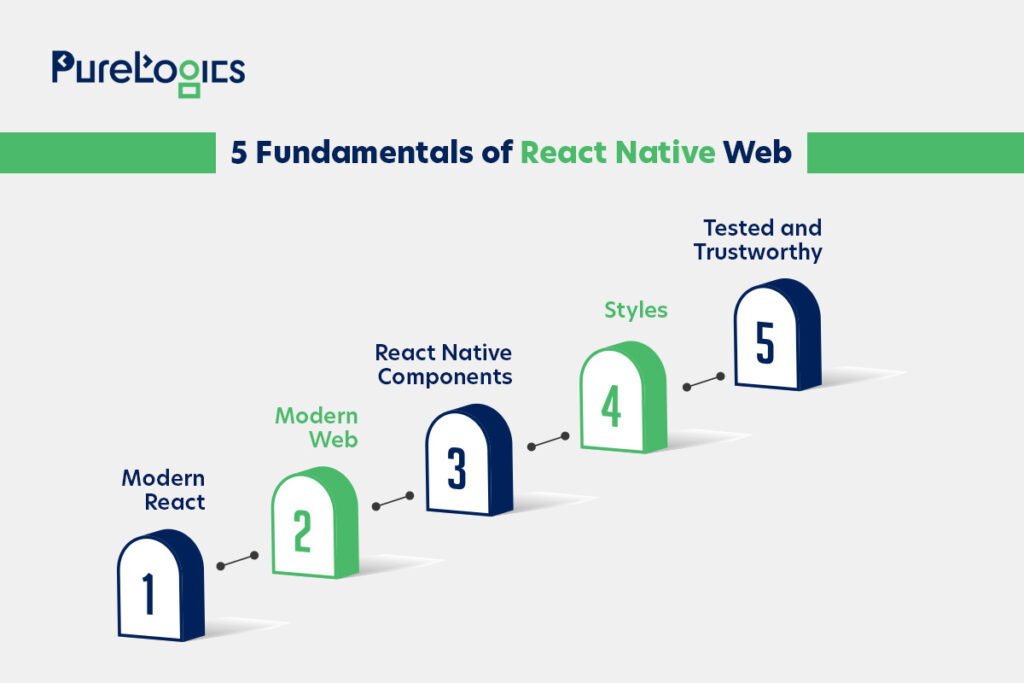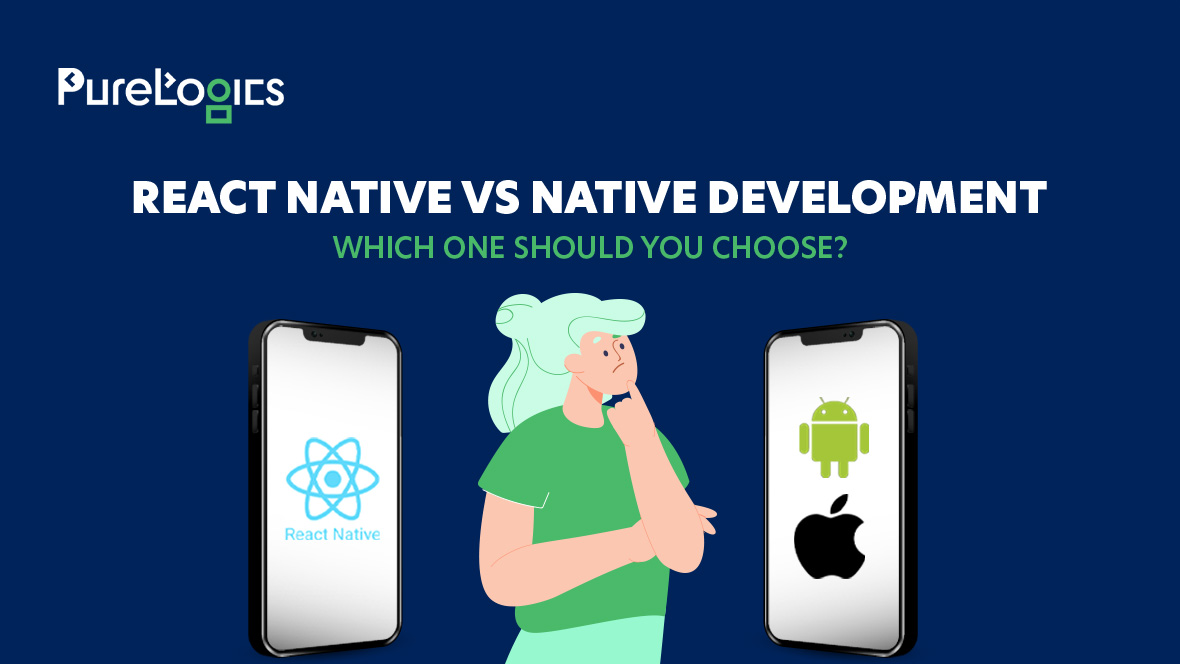What if you could build web and mobile apps using the same codebase?
Sounds like a dream, right?
Choosing the right tech stack is crucial for any project, and React Native web is revolutionizing how developers approach web development. It allows you to use React Native’s components and APIs to create responsive, scalable, and high-performance web applications.
With businesses constantly seeking ways to optimize development efforts, React Native for web offers the flexibility to target multiple platforms without extra overhead. No wonder it’s gaining traction among developers worldwide.
In this blog, we’ll break down everything you need to know about React Native—its features, benefits, limitations, and why it’s shaping the future of cross-platform development. Stay tuned!
What is React Native Web?
React Native Web is an open-source framework that allows developers to use React Native components and APIs to build web applications. It extends React Native’s capabilities beyond mobile, enabling developers to create responsive, high-performance web apps with a single codebase. This means you can write React Native code and run it seamlessly on the web without major modifications.
By bridging mobile and web development, React Native Web simplifies workflows, enhances code reusability, and accelerates development speed. It’s a powerful choice for teams looking to create flexible and scalable web applications.
5 Fundamentals of React Native Web

The following are the top fundamentals of React Native for the web:
Modern React
React Native is built upon modern React APIs, including functional components and hooks. This foundation allows developers to write efficient, maintainable code, leveraging React’s latest features for enhanced performance and scalability.
Modern Web
The framework utilizes native DOM APIs to implement specific features, ensuring that as the web platform evolves, React Native web can seamlessly integrate new capabilities. This approach leads to smaller, faster implementations by adopting new DOM APIs as they become widely available in browsers.
React Native Components
React Native offers browser-compatible versions of core React Native components such as View, Text, Image, and ScrollView. These components enable developers to create web applications with a consistent structure and behavior across platforms.
Styles
Styling in React Native Web is managed through JavaScript using the StyleSheet API, which translates styles into native CSS. This method ensures efficient styling and maintains consistency between mobile and web platforms, simplifying the development process.
Tested and Trustworthy
React Native has undergone extensive unit and production testing to ensure its reliability. Significant updates are first released as canary versions to gather feedback and prevent regressions, and changes to each library module’s compressed file size are monitored to maintain performance.
When Your Web Development Project Needs React
The following are some scenarios when your website developer might need React for a web development project:
When You Need a Dynamic User Interface
If your web application requires frequent updates to the UI based on user interactions, React is an excellent choice. Its virtual DOM optimizes rendering, ensuring a smooth experience without unnecessary reloading. This makes React ideal for dashboards, real-time applications, and interactive platforms.
When Scalability is a Priority
For projects that need to scale, React’s component-based architecture enables modular development. You can easily extend functionality without rewriting existing code, making it a great fit for large-scale applications like e-commerce platforms and SaaS solutions.
When Performance is Crucial
React’s efficient state management and lightweight framework enhance performance, especially in data-heavy applications. Its ability to handle complex UI updates efficiently makes it ideal for fintech, analytics, and media-rich applications.
When You Need a Strong Developer Ecosystem
React’s vast ecosystem, with numerous third-party libraries and tools, accelerates development. The active community ensures continuous improvements, extensive documentation, and long-term support, making React a future-proof choice for web projects.
Benefits of React Native Web
React Native web offers several advantages for web application development. Let’s have a quick look!
Code Reusability: Developers can reuse a significant portion of code to develop mobile and web apps. This reduces development time as well as their overall effort.
Cross-Platform Compatibility: React Native for web allows developers to build apps that run excellently on various platforms like web browsers, Android, iOS, and Windows, enabling businesses to reach a broader audience without developing separate platform apps.
Faster Development: React Native offers a component-based approach to building web and mobile apps, which can reduce the app-to-market time significantly.
Improved Performance: React Native has highly efficient rendering capabilities to build apps that perform excellently, leading to higher user engagement.
Easier Maintenance: Web apps built with React Native are easy to maintain and scale. As multiple apps are built with a single codebase, changes made in a shared codebase will reflect across all apps simultaneously.
Limitations of React Native Web
While React Native for Web offers numerous advantages, it’s essential to be aware of its limitations:
Limited Web API Support
React Native for Web doesn’t support all APIs available in React Native, particularly those requiring mobile hardware access, such as accelerometers. This limitation may necessitate re-implementing certain functionalities or omitting them from the web version.
Compatibility Issues
Some popular React Native libraries lack compatibility with web applications. For instance, components like RefreshControl are absent in React Native web, requiring developers to seek alternative solutions or third-party libraries to achieve similar functionality.
Styling Constraints
Styling in React Native for Web inherits certain limitations from React Native, such as difficulties in styling child components and selecting sibling elements. These constraints can pose challenges in achieving complex layouts and designs in web applications.
To overcome these limitations, developers can implement platform-specific code to address unsupported APIs and ensure compatibility. Utilizing alternative or third-party libraries can replace missing components while adopting CSS-in-JS solutions or integrating traditional CSS can help manage advanced styling requirements effectively.
Need expert guidance for your React Native web project? Our team specializes in building scalable, high-performance web applications for 19+ years. Fill out the form to book your free consultation with our experts at PureLogics.


 [tta_listen_btn]
[tta_listen_btn]
 April 23 2025
April 23 2025






